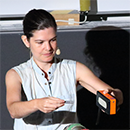 Adi Ashkenazi
Adi AshkenaziDr. Ashkenazi completed her graduate research at Tel Aviv university, as part of the ATLAS collaboration at the Large Hadron Collider in CERN, the European Organisation for Nuclear Research. The standard model of particle physics describes the universe using a set of elementary particles and the interactions between them, but it is known to be incomplete implying the existence of new physics and Dr. Ashkenazi is interested in any evidence for such new physics. Specifically she is looking at neutrinos, the only particles with yet unknown properties and which cause inconsistency of the standard model by having a mass. As the part of the MicroBooNE experiment at Fermilab in Illinois Adi is studying the interactions between the neutrino and Argon nuclei, and constraining this interaction modelling by studying equivalent interactions with Electrons.
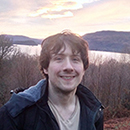 Daniel Craik
Daniel CraikUsing data from the LHCb experiment, I'm performing jet studies with an aim to shine new light on the quark content of the proton. I'm also working on hadron spectroscopy analyses, where we search for new bound states of hadronic matter. My previous work focused largely on Dalitz plot analyses of three-body b→c decays, yielding first observations of new mesons and a measurement of the CKM quark-mixing angle gamma.
I act as liaison between the LHCb calorimeter and quarkonia working groups and I'm also involved in data-quality activities, both for the LHCb detector as a whole and specifically for the calorimeter sub-detectors. I've been heavily involved in the development of the EvtGen and RapidSim software packages (both decay simulation packages) as well as the Laura++ fitting package.
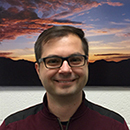 Ivica Frisčič
Ivica FrisčičI work on the DarkLight project, which includes building and operating an internal gas target and measuring the radiative Moller scattering, in preparation for a search for a dark photon in an electron scattering experiment.
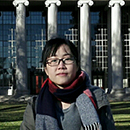 Yi Jia
Yi JiaI’m working on the Alpha Magnetic Spectrometer (AMS) with Professor Ting. My work on a new method of the tracker charge measurement leads to significant improvements in the AMS charge resolution, thus paving the way for the unexplored flux measurements of high Z cosmic rays.
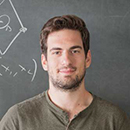 Lampros Lamprou
Lampros LamprouI am curious about the fundamental nature of spacetime and gravity. The quantum physics of black holes and advances in String Theory indicate that our contemporary notion of space i.e. that of a continuous dynamical geometry obeying Einstein's equations is an emergent concept. Gravitational physics appears instead as an effective description of a lower-dimensional quantum mechanical theory. This idea is called the holographic principle.
In my Ph.D., I worked towards developing a mathematical language for describing the emergence of geometry in the AdS/CFT correspondence, a string-theoretic realization of the holographic principle. My proposal was based on the curious relation between spacetime geometry and quantum entanglement discovered by Ryu and Takayanagi and imported tools from the field of Integral Geometry and the Tensor Network description of Condensed Matter systems. Questions like "what is a point?", "what is a distance?" in AdS space found answers in the pattern of quantum information storage in the CFT wavefunction. The formalism developed during this endeavor was later utilized to propose a new way of linking the degrees of freedom on the two sides of the AdS/CFT duality. I am currently thinking about the physics of gravitational entropy, the emergence of diff.
 Matthew Musgrave
Matthew Musgrave I joined the Laboratory for Nuclear Science in 2016, and I have been working with the Collider-Accelerator Department at BNL as part of an MIT & BNL collaboration to develop a polarized 3He ion source for RHIC. The polarized 3He ion source is an essential R&D effort for a future Electron Ion Collider, which has proposed to accelerate polarized light ions to study the spin structure of nucleons.
 David James Murphy
David James MurphyI am broadly interested in the interface between physics and high performance computing. I have worked to understand how the properties of hadrons emerge from the dynamics of the strong interaction using the techniques of lattice QCD. My recent work has focused on precision calculations of light meson decays, enabling stringent tests of the Standard Model of particle physics. I am also interested in advancing the numerical algorithms underlying lattice QCD calculations. As a member of the Columbia Experimental Gravity (GECo) group I have used my expertise in computing and applied mathematics to develop data analysis algorithms used to search for gravitational wave signals in the LIGO interferometers.
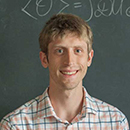 Michael Wagman
Michael Wagman I studies strongly coupled quantum field theory and aims to quantitatively understand how the complex phenomenology of hadronic and nuclear physics emerges from the relatively simple interactions of quarks and gluons described by QCD. I use lattice field theory to simulate few-baryon systems, effective field theory to connect lattice QCD results to inputs for experimental beyond the standard model physics searches and nuclear astrophysics, and perturbative methods to study the phase diagram of cold, dense nuclear matter relevant for neutron stars. I also works on techniques to overcome the lattice QCD sign/signal-to-noise problem that would allow lattice QCD simulations of cold, dense nuclear matter.
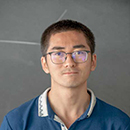 Jie-Qiang Wu
Jie-Qiang Wu I am interested in holography and AdS/CF T . Currently my focus is on AdS3/CF T2 and holographic entanglement entropy. In AdS3/CF T2 system, I try to understand the holographic entanglement entropy, holographic description of other quantum information effect, and bulk reconstruction. I also try to extend the result into higher dimensional case.
 Mengjiao Xiao
Mengjiao XiaoI joined LNS in June 2018 as a postdoctoral associate. I obtained my bachelor's degree and Physics PhD degree from Shanghai Jiao Tong University in 2010 and 2016, respectively. Before move to MIT, I held the postdoctoral associate at University of Maryland, College Park from 2016 to 2018, working on PandaX and JUNO experiment.
My research interests are looking for physics beyond the Standard Model, in particular dark matter interaction and unknown natures of neutrino. At MIT, I’m working on GAPS (General Antiparticle Spectrometer) with Prof. Kerstin Perez. GAPS experiment uses Si(Li) detector to capture low-energy cosmic-ray anti-deuterons produced by the annihilation of dark matter (WIMPs). My current work is focusing on the R&D of Si(Li) detector.